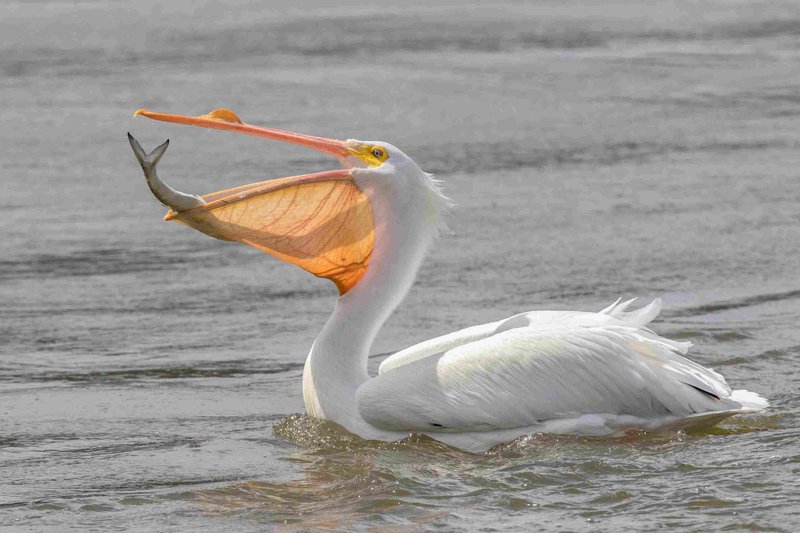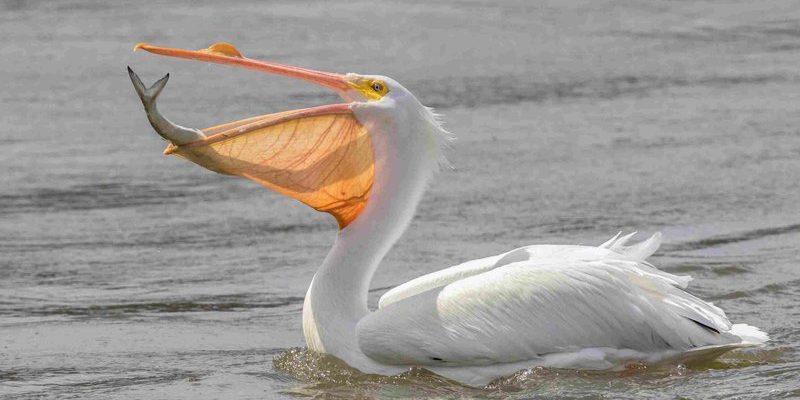
When we look at pelicans, it’s hard not to be amazed by how they interact with their habitats. They have evolved some incredible traits that help them hunt, mate, and raise their young in sometimes challenging conditions. From their fishing techniques to their social behaviors, every aspect of their life tells us a story of adaptation. So, if you’re ready to dive into the world of pelicans and discover how they thrive, grab your favorite drink, and let’s get started!
Physical Adaptations for Fishing
Pelicans are best known for their stunning fishing techniques, and their physical adaptations play a huge role in this. Their most noticeable feature is their long, sturdy beak paired with a large throat pouch, which they use to scoop up fish. It’s similar to how we might use a net to catch fish—only they do it with their mouths! This specialized beak allows pelicans to catch and hold slippery fish, making them efficient hunters.
But there’s more to it than just the beak. Pelicans also have webbed feet that help them paddle through the water gracefully. These feet act like flippers, allowing them to maneuver quickly when chasing fish. Think of a synchronized swimmer gliding through water; that’s the grace pelicans show when they dive in for a meal. When fishing, they often work in groups, which increases their success rates. With teamwork, they can herd fish towards the surface, making it easier for everyone to feast!
Social Behavior and Group Living
Ever seen a group of pelicans lounging together? Their social behavior is a key part of how they adapt to their environment. Pelicans are very social birds and often live in colonies. This communal living provides safety in numbers. When one pelican spots a predator, it can alert the others, ensuring the entire group stays safe. It’s kind of like having a built-in alarm system!
In colonies, pelicans also engage in cooperative breeding. This means that all members of the group help care for the young. Instead of just one pair of parents raising their chicks, everyone pitches in. This shared responsibility not only strengthens their social bonds but also increases the survival rate of the chicks. It’s truly heartwarming to see how they work together.
Behavioral Adaptations for Temperature Regulation
Pelicans have some clever tricks up their sleeves when it comes to dealing with temperature changes. You might be wondering how they keep cool under the hot sun or warm when temperatures drop. One of their adaptations is how they regulate their body temperature through behavior.
For instance, on particularly hot days, pelicans like to wade into the water or even take a dip. Water helps cool them down, much like how we might jump in a pool on a sweltering summer day. They also practice a behavior known as “gular fluttering.” This involves vibrating the throat pouch, which helps them release excess heat, sort of like how we might fan ourselves when we’re too warm.
On cooler days, pelicans will often fluff up their feathers to trap air and keep warm. It’s really amazing how they instinctively know what to do to stay comfortable in varying weather conditions.
Adaptations to Different Habitats
Pelicans can thrive in a variety of environments, from coastal shores to freshwater lakes. Each habitat requires certain adaptations. For example, coastal pelicans often have larger wingspans compared to their freshwater relatives. This helps them glide over the ocean and take advantage of the wind currents. If you’ve ever watched them soaring above the waves, you’ve seen this in action!
In freshwater areas, pelicans may prefer to inhabit regions with extensive marshlands. These areas provide abundant fish and offer plenty of nesting sites. Pelicans in these environments have developed unique behaviors, such as diving from great heights to catch fish, which is less common in coastal pelicans. Just imagine them swooping down like a squad of aerial acrobats—it’s quite the sight!
Feeding Strategies and Techniques
Pelicans are masterful feeders, using a variety of techniques to catch their meals. One common method is called the “scoop dive.” When they spot fish below, they plunge into the water headfirst, using their beak to trap fish in their pouch. It’s a high-energy move that requires skill and precision.
Another interesting technique is “draining.” After catching fish, they raise their heads and let the water drain out of their pouch before swallowing their meal. This maximizes the number of fish they can catch in one go. Imagine trying to drink through a straw while keeping everything else in—this is what pelicans master perfectly!
Additionally, pelicans have learned to adapt their feeding habits based on the availability of fish. If food is scarce, they’ll often adjust their hunting times or locations. That flexibility helps ensure they always find something to eat, much like how we adapt our meal plans based on what’s in the fridge.
Impact of Environmental Changes
Like all wildlife, pelicans face challenges from environmental changes. Factors such as climate change, pollution, and habitat loss affect their populations. Pelicans are particularly sensitive to changes in fish populations, so when fish are overfished or habitats are damaged, their food supply diminishes.
However, pelicans are resilient. Some species have even adapted to urban areas, learning to hunt in fish markets or near boats where fishermen are working. This adaptability showcases their ability to thrive despite challenges.
Conservation efforts play a crucial role in protecting pelican habitats. By maintaining clean waterways and safeguarding nesting areas, we help ensure these incredible birds can continue to flourish.
Pelicans are more than just unique-looking birds; they are a testament to the power of adaptation. From their impressive fishing techniques and social behaviors to their ability to thrive in diverse habitats, pelicans showcase nature’s ingenuity.
As we continue to learn from and appreciate these remarkable creatures, it’s essential to promote conservation efforts that protect their environments. After all, when pelicans thrive, they not only enrich the ecosystem but remind us of the delicate balance we share with nature. Next time you see a pelican soaring or diving, take a moment to appreciate the many ways it has adapted to its world—it’s a true marvel of nature!

